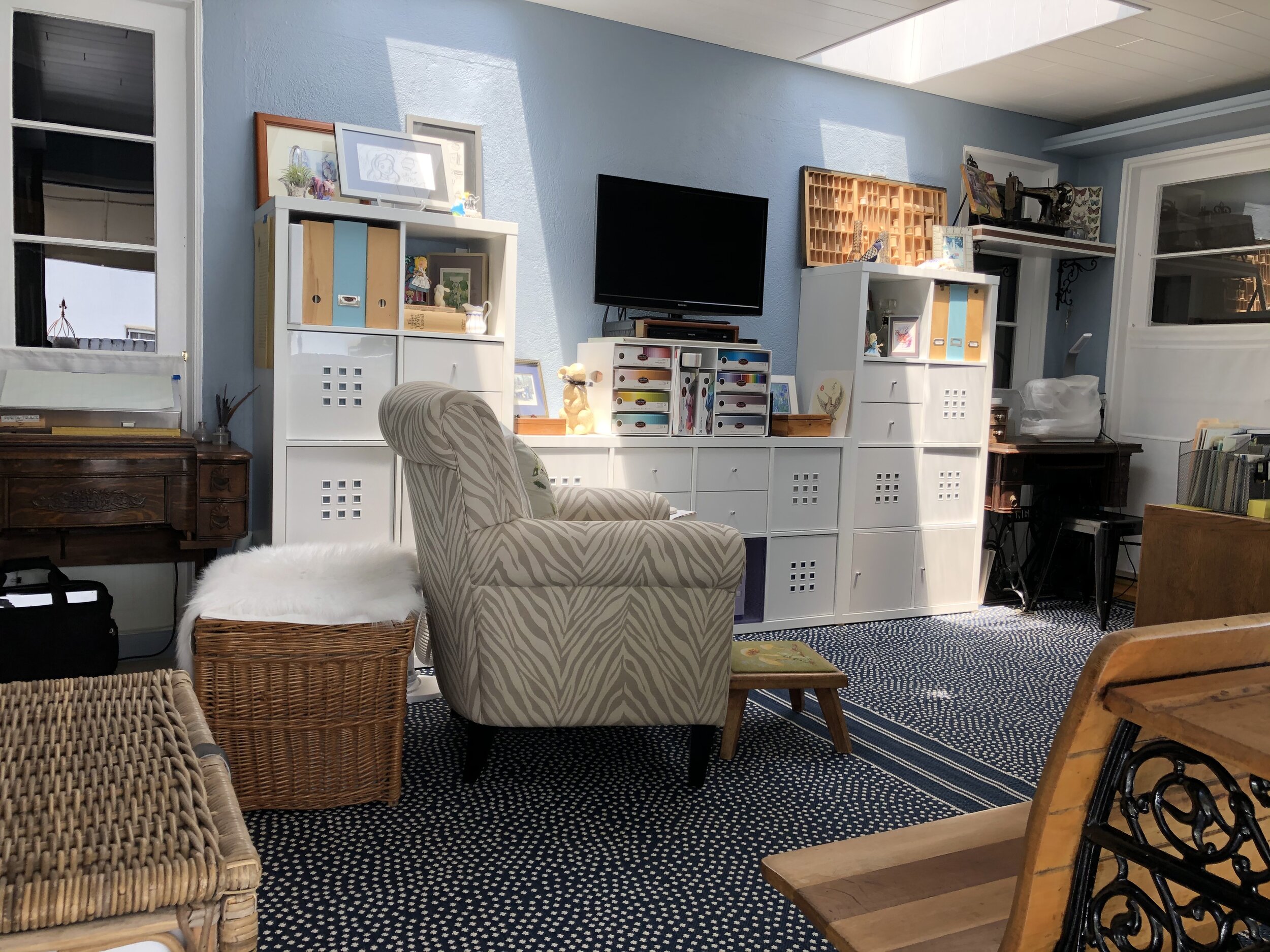Many people find it difficult to paint wood furniture, and I completely understand the dilemma. To paint or not to paint can be a difficult decision, so here are a few guidelines I use when making that decision.
Number one is usually the quality of the piece. For example is it in good to excellent condition? Is it a fine piece, an old piece? Is it a family heirloom? All of these questions should be asked and evaluated honestly. I do not posses fine museum quality antiques, but I have plenty of pieces considered to be antique. For the most part, I would prefer to restore them, or if in acceptable condition leave them as they are; but that is not to say I would not paint some of them under certain circumstances. Answering no to any of the above questions would eliminate my concerns about painting or not painting a piece.
When decorating a room, I look to see how “heavy” the feel is in the room. Usually, when there is a lot of wood, a room can appear to be dark and heavy, which is fine if you are looking for a cosy reading room or library like room. Too much wood can have the appearance of a cave; think of the wood paneled rooms of the 1960s and 70s, just add plaid upholstery and you can transform a room back in time. If you wish to add a lightness to a room, consider painting some of the wood pieces. Even painting the frame of an upholstered chair can lift the room, especially with new upholstery in an updated pattern or color.
The tea cart shown here required such a decision. My client has had it for probably 40+ years. It is solid oak, and it is in excellent condition; however, she felt it was too granny now and wanted a change. She is an artist with an eclectic style, which I love. Color is very important to her; with her dining room walls painted a pale blue, with lots of bright sunlight entering the room, she thought she would like to bring in some orange, the complimentary color to blue. I fully agreed, and we decided on Annie Sloan’s Chalk paint in Barcelona Orange, with a dark wax finish. It turned out beautifully and she loves it. She says it makes her happy instead of bringing her down, as it did before. It looks fantastic in the room, and no one would call this room a “granny room”.
I have painted, stripped, refinished and antiqued lots of furniture in my time; and I am always happy to see the change. A couple of years ago, I found an old, round, oak table in an antiques store. The base had been partially stripped and I could see that it was quarter sawn white oak, but had been painted white. There was another table, a reproduction, priced more than a hundred dollars higher than the table I was considering. When I returned to purchase the table, the reproduction was sold, lucky for me. Whoever bought it was either not aware of the quality of the older table or didn’t want to have to strip and refinish it. The round oak table comes in very handy when we have large sit down gatherings. It came with two leaves, and seats six to eight people, all for under $200— now that’s a bargain.
If you are faced with a painting decision, I recommend you get an estimate on both painting and restoring the piece. Cost can be a factor that helps you decide which to do. With respect to family heirlooms, I would check with family members outside of your immediate family to find a new home if it does not suit you or any immediate family member any longer. The age of a piece of furniture does not necessarily make it a valuable antique, so painting such a piece would not devalue it; besides, once a piece is painted, it can always be stripped and the natural wood restored.






































































